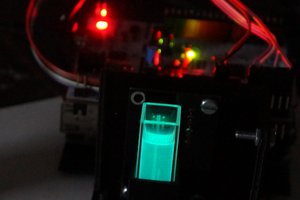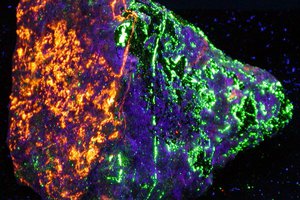See the patent link.
http://www.google.com/patents/US4765737
The present invention relates generally to the field of cell flow cytometry using light measurement and cell sorting which includes the measurement of the size of selected cells, and more particularly with the making of the measurement of the size of the cell when the cell is the only cell passing at right angles through a light beam and the cross section of the light beam is larger than the cell size to be measured.
There are many publications relating to the measurement of sizes of cells in the field of flow cytometry and cell sorting. As the field of biotechnology expands, the application to biological cells will be manifold.
An article by J. A. Steinkamp and H. A. Crissman in the Journal of Histochemistry and Cytochemistry, Vol. 22, No. 7, pp. 616-621 (1974) entitled "Automated Analysis of Deoxyribonucleic Acid, Protein and Nuclear to Cytoplasmic Relationships in Tumor Cells and Gynecologic Specimans" is representative of the prior art. In that publication, cells to be analyzed are stained with fluorescent material and passed in a stream through a laser beam at right angles where both low angle forward scatter of light and fluorescent emmissions are measured at right angles from both the axis of flow and the laser beam. Red and green fluorescent signals are amplified and then integrated by electronic integrators to provide an output signal with an amplitude proportional to total DNA and protein content respectively. One color measured DNA and the other color measured protein content. The integrators contained additional circuitry to detect the time duration in which fluorescence signals were above a threshold level (i.e. cross-over timing). These time spans were then converted to signal amplitudes which are proportional to nuclear and cytoplasmic diameters using time-to-voltage height converters. Steinkamp describes his system as another technique for determining nuclear and cytoplasmic size relationships of cells stained with two fluorochromes specific to the nucleus and cytoplasm. He calls his technique "time of flight" as measuring the time it takes for the cell nucleus and cytoplasm to cross through a narrow laser beam. He states that if the cell flow rate (velocity) is constant, then the nuclear and cytoplasmic diameters are proportional to the time of flight across the beam. He concludes that a new methodology is demonstrated in which the duration of time of flight across a narrow laser beam is used to determine nuclear and cytoplasmic sizes and that improvements in laser beam shaping optics are being incorporated into the system to provide even narrower beams to measure cell dimensions more accurately.
Later, an article by T. K. Sharpless and M. R. Melamed in the Journal of Histochemistry and Cytochemistry, Vol. 24, No. 1, pp 257-264 (1976) entitled "Estimation of Cell Size from Pulse Shape in Flow Cytofluorometry" confirms that as long as the beam of light traversed by the cell is not broad compared to the cell diameter, the time course of fluorescence emission will be a blurred one-dimensional image of the cell and from such an image one might expect at least a good approximation of cell size. Moreover, the publication goes on to describe two alternate amplitude-independent estimates of pulse width. The first is based on a threshold at some fraction of pulse height, or on a pair of thresholds scaled to some fixed central fraction of the total intensity. The second is based on the ratio of pulse area to peak height. Both of these methods require that the pulse shape be stored in a high quality delay line until the peak height or total intensity has been measured and held.
Later, a textbook was published by Wiley & Sons, Inc. (1979) entitled Flow Cytometry and Sorting and edited by Melamed et al. Chapter 6 of that book entitled "Slit-scanning and Pulse Width Analysis" by Leon L. Wheeless, Jr. is pertinent background...
Read more » Bruce Land
Bruce Land
 Sky Carter
Sky Carter
 esben rossel
esben rossel
 AntiObsolescentToyMaker
AntiObsolescentToyMaker
 Alan Green
Alan Green